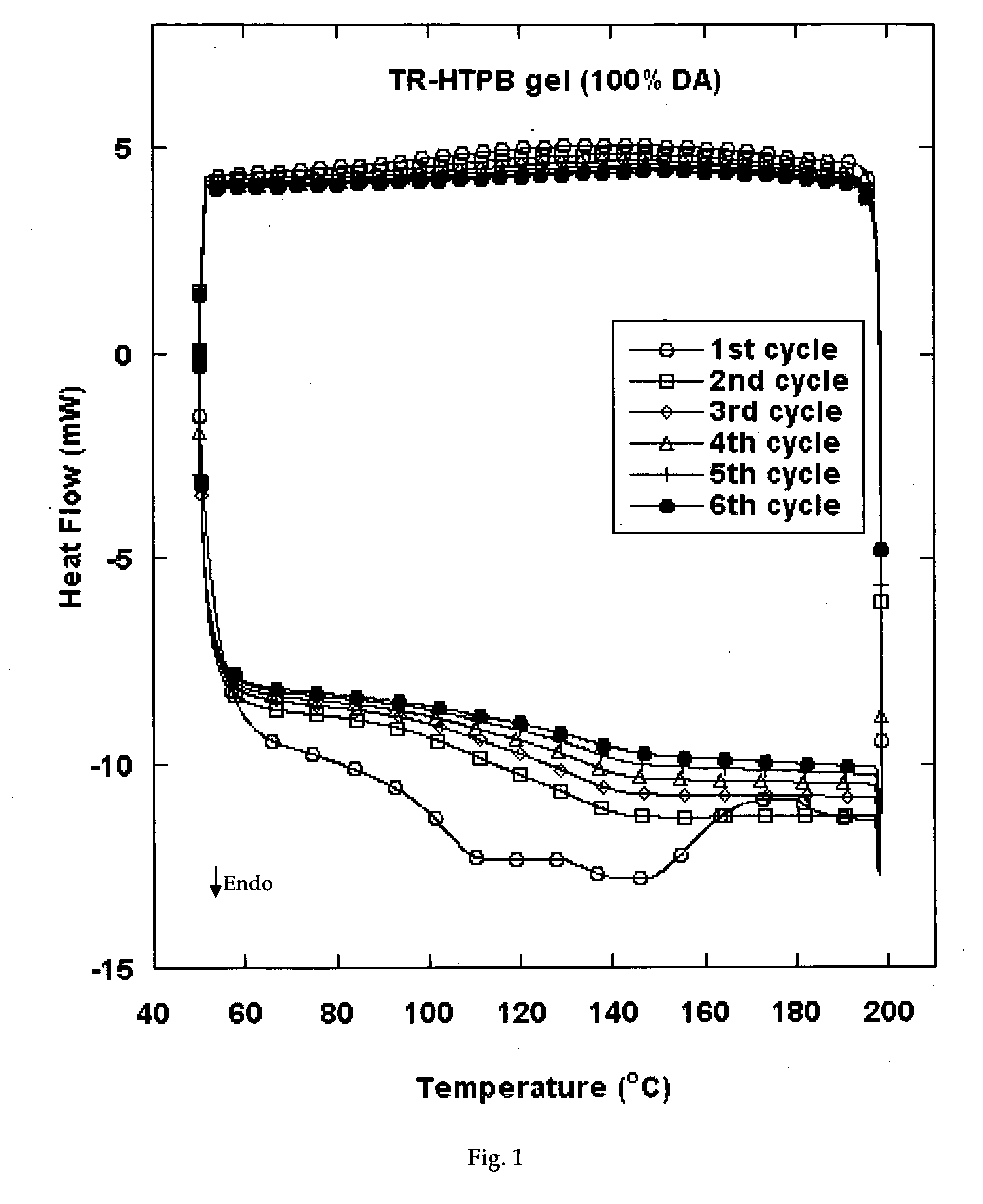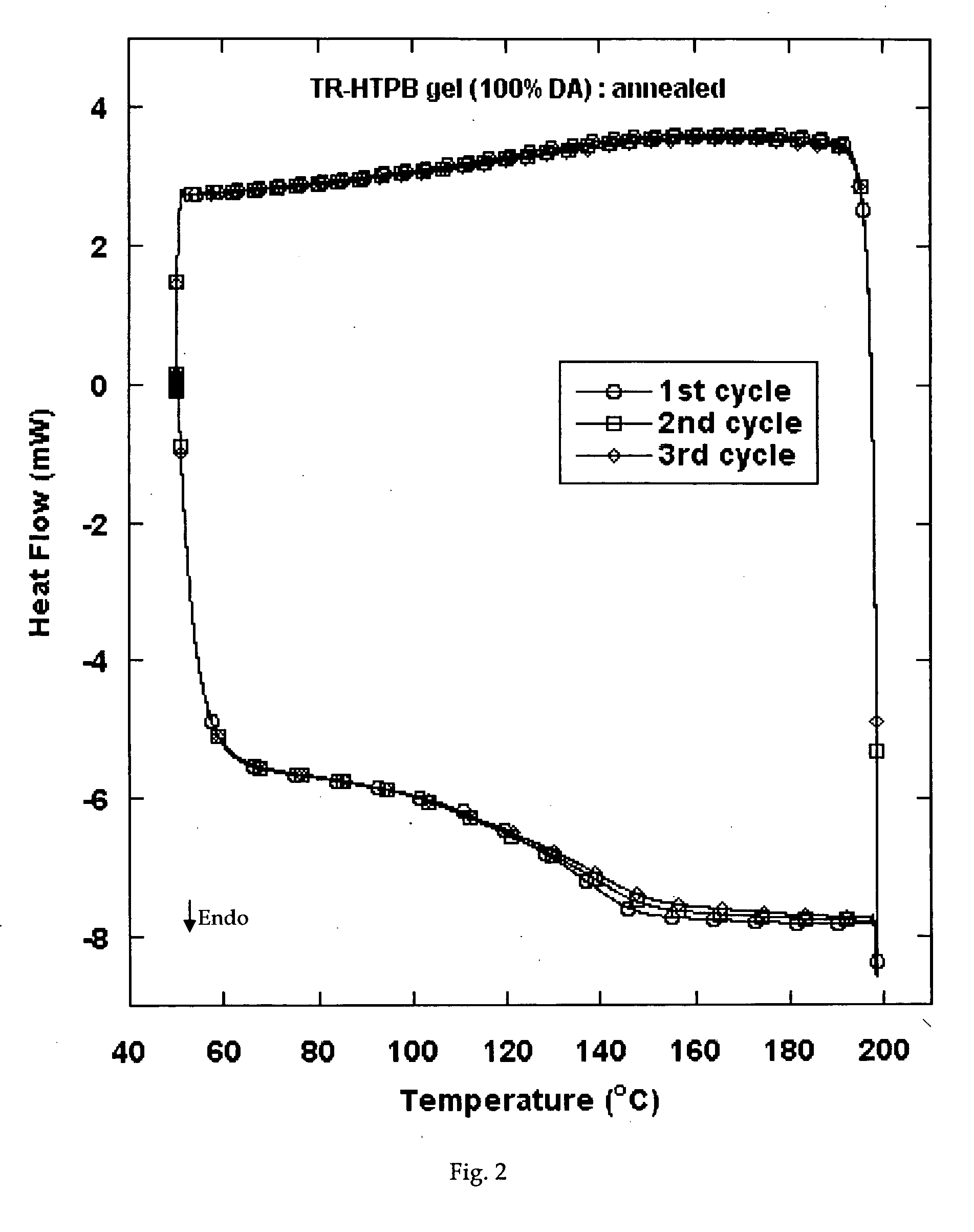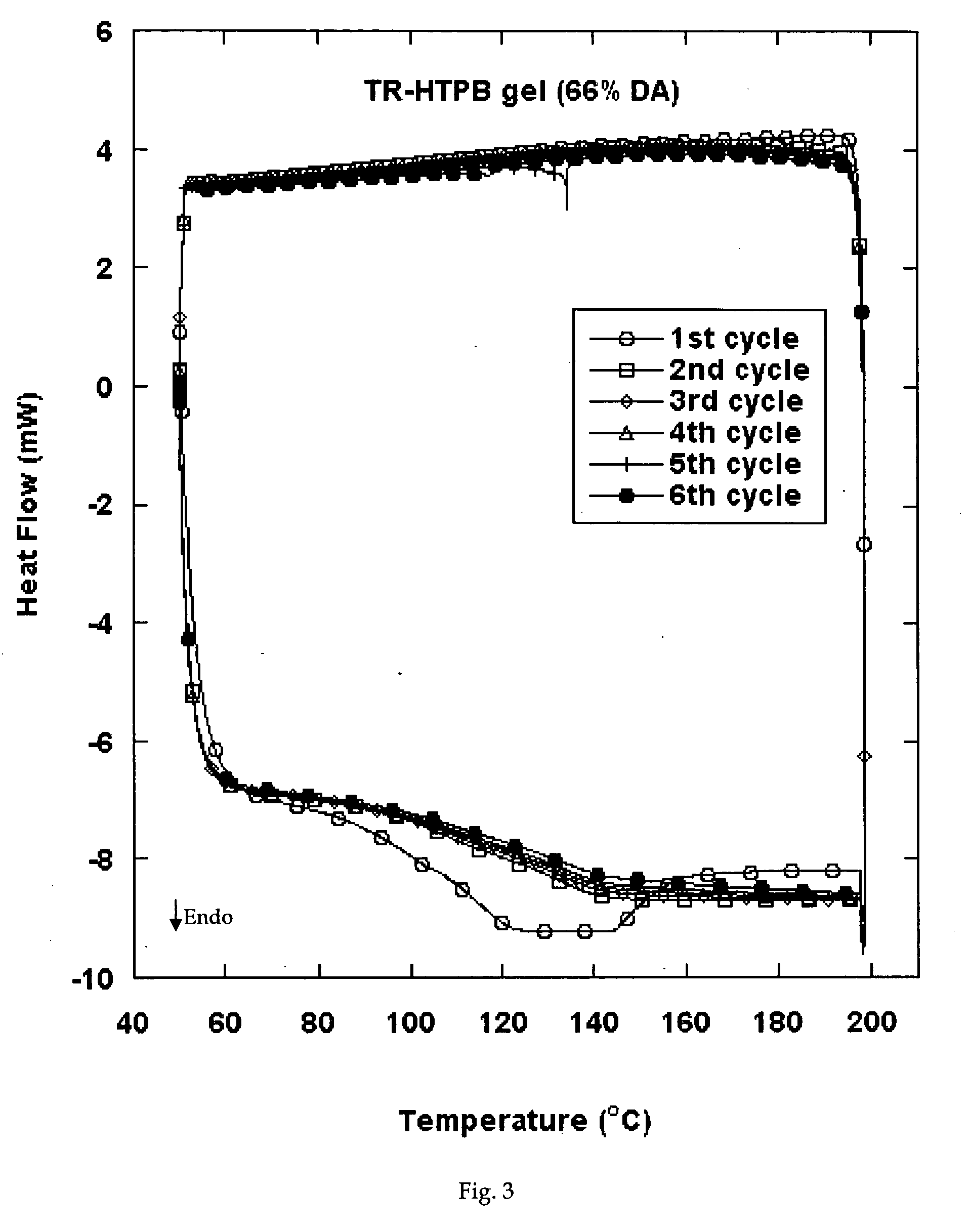Reversible viscosity reducing polymer
a viscosity reduction and polymer technology, applied in the field of polymer, can solve the problems of reducing the thrust profile relative to homogeneous propellants, and the chemistries have not been extended to form single diels-alder linkages
- Summary
- Abstract
- Description
- Claims
- Application Information
AI Technical Summary
Benefits of technology
Problems solved by technology
Method used
Image
Examples
example 1
[0040]A magnetic stir bar, acetone (500 mL), and 4-aminophenol (44.5 g, 400 mmol) are loaded into a 1000 mL Erlenmeyer flask to form a brown slurry that is stirred at room temperature. Maleic anhydride (40 g, 400 mmol) is dissolved in acetone (300 mL) and added to the Erlenmeyer flask. Addition of the maleic anhydride induces a large exotherm and a color change from brown to bright yellow. The solution becomes homogenous for 3-5 min, followed by rapid precipitation of a yellow solid. The resulting mixture is stirred at room temperature for at least 2 h. The precipitate is isolated via filtration and rinsed with acetone (˜200 mL). The yellow precipitate (˜75 g), N,N-dimethylformamide (DMF) (50 mL) and a stir bar are loaded into a 300 mL round bottom flask. Next, a slurry of P2O5 (21 g) is prepared in DMF (70 mL) to which concentrated H2SO4 (9 g) is added. After a homogenous solution is achieved, the solution is added to the 300 mL round bottom flask and the reaction is stirred at 70°...
example 2
[0041]A magnetic stir bar, HTPB (10.5 g, 9.3 mmol OH), dibutyltin dilaurate (0.5 ml, 0.93 mmol), and CHCl3 (25 mL) are loaded into a 50 mL round bottom flask. Next, 2-furfuryl isocyanate (1.0 mL, 9.3 mmol NCO) is added and the reaction is stirred at 50° C. for 2 h. The reaction is cooled to room temperature and solvent is removed via rotary evaporation to yield PB-Furan of scheme 2 in quantitative yield. 1H NMR: δ (ppm) 7.37 (1H, s), 6.32 (1H, s), 6.25 (1H, s), 5.8-4.8 (50.48H, br), 4.47 (2H, s), 2.4-0.9 (93.61H, br).
example 3
[0042]A magnetic stir bar, HTPB (98.6 g, 89 mmol OH), dibutyltin dilaurate (22 mg, ˜4 drops), and THF (80 mL) are loaded into a 250 mL round bottom flask. Next, 2-furfuryl isocyanate (9.4 mL, 89 mmol NCO) is added and the reaction is stirred at 65° C. for 5 h. Next, compound 1 (16.7 g, 89 mmol) is dissolved in acetone (20 mL) and added to the 250 mL round bottom flask. The reaction is stirred at 65° C. for 16 h. The reaction is cooled to room temperature and solvent is removed via rotary evaporation to yield TR-HTPB of scheme 2 in quantitative yield. 1H NMR: δ (ppm) 7.04 (2H, d), 6.89 (1H, d), 6.82 (2H, d), 6.79 (2H, d), 6.53 (3H, br), 5.8-4.8 (91.03H, br), 4.5 (2H, s), 2.4-0.9 (169.40H, br).
PUM
| Property | Measurement | Unit |
|---|---|---|
| Angle | aaaaa | aaaaa |
| Temperature | aaaaa | aaaaa |
| Viscosity | aaaaa | aaaaa |
Abstract
Description
Claims
Application Information
 Login to View More
Login to View More - R&D
- Intellectual Property
- Life Sciences
- Materials
- Tech Scout
- Unparalleled Data Quality
- Higher Quality Content
- 60% Fewer Hallucinations
Browse by: Latest US Patents, China's latest patents, Technical Efficacy Thesaurus, Application Domain, Technology Topic, Popular Technical Reports.
© 2025 PatSnap. All rights reserved.Legal|Privacy policy|Modern Slavery Act Transparency Statement|Sitemap|About US| Contact US: help@patsnap.com



